Related Research Articles
The Woman's Christian Temperance Union (WCTU) is an international temperance organization. It was among the first organizations of women devoted to social reform with a program that "linked the religious and the secular through concerted and far-reaching reform strategies based on applied Christianity." It plays an influential role in the temperance movement. Originating among women in the United States Prohibition movement, the organization supported the 18th Amendment and was also influential in social reform issues that came to prominence in the progressive era.

Martha McClellan Brown was an American lecturer, educator, reformer, newspaper editor, and major leader in the temperance movement in Ohio.
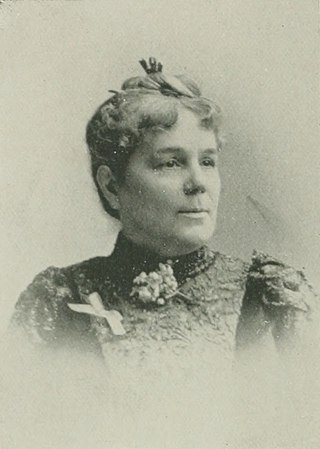
Mary Towne Burt was a 19th-century American temperance reformer, newspaper publisher, and benefactor from Ohio. Burt was identified with temperance work nearly all her life. She was the first president of the Auburn, New York branch of the Women's Christian Temperance Union, and beginning in 1882, served as president of the New York State Society of the Union. In 1875, she became the publisher, and subsequently the editor, of Our Union, the organ of the society, and in 1878–80 was the corresponding secretary of the National Union. For several years, Burt had charge of the legislative interests of the union, and several laws for the protection of women and young girls resulted from her efforts.
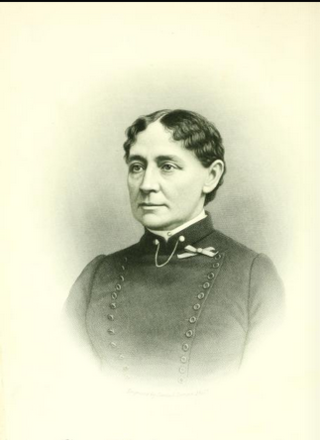
Mary Brayton Woodbridge was an American temperance reformer and editor. She was the first president of the local temperance union of her home town at Ravenna; then for years, president of her state, Ohio; and in 1878, she was chosen recording secretary of the National Woman's Christian Temperance Union (WCTU). Upon the resignation of Judith Ellen Foster at the National WCTU convention in St. Louis, in October, 1884, Woodbridge was unanimously chosen national superintendent of the department of legislation and petitions. In addition to this public effort, and official duties, Woodbridge edited on a weekly basis several columns of the Commonwealth, a temperance paper. She also edited the Amendment Herald, which, under her leadership, attained a weekly circulation of 100,000 copies.

Frances Julia Barnes was an American temperance reformer. She served as General Secretary of the Young Woman's Branch of the Woman's Christian Temperance Union (WCTU).

Marietta Bones was an American woman suffragist, social reformer, and philanthropist. In 1881 Bones was elected vice-president of the National Woman Suffrage Association (NWSA) and annually re-elected for nine years. In 1890 suffragist Susan B. Anthony and supporters of the movement merged the National Women Suffrage Association into the National American Women Suffrage Association (NAWSA). In 1882, Bones made her first appearance as a public speaker in Webster, soon to be Webster, South Dakota, where she later resided. She was an active temperance worker, and was secretary of the first Non-Partisan National Woman's Christian Temperance Union in 1889. She took great interest in all reform and charitable institutions.
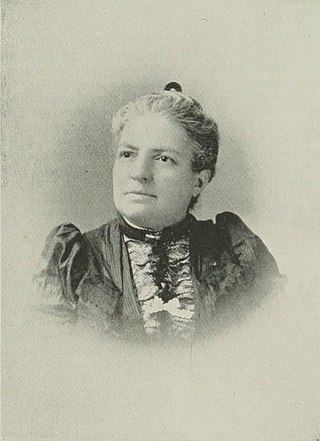
Esther T. Housh was a 19th-century American social reformer, author, and newspaper editor. She was the President of the Vermont State Woman's Christian Temperance Union (WCTU). While serving as press superintendent of the National WCTU, she instituted the National Bulletin. She was the editor of The Woman's Magazine, as well as the author of many temperance leaflets, and poems.
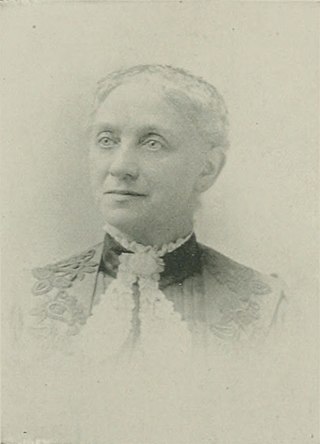
Mary Jane Aldrich was an American temperance reformer, lecturer, and essayist of the long nineteenth century. She served as vice-president of the National Woman's Christian Temperance Union (WCTU) and president of the Iowa union. At the time of the division in the ranks of the WCTU, Aldrich, with the Iowa union, adhered to the non-partisan temperance work, and became evangelistic secretary of the Non-Partisan National Woman's Christian Temperance Union. As a temperance worker, she was characterized as sanguine and practical. As a speaker, she was bright, forceful, entertaining and logical. She was the author of "Church and Sunday School Temperance Work" (1898).
The First Woman's National Temperance Convention was a founding event in the establishment of the American Woman's Christian Temperance Union (WCTU).
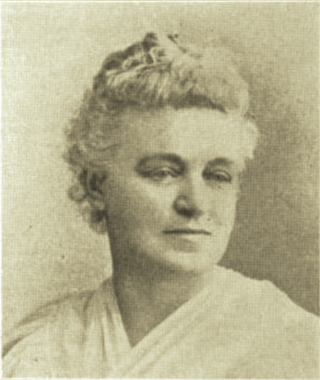
Mary Coffin Johnson was an American temperance activist and writer. She was the publisher of the National Woman's Christian Temperance Union's (WCTU) first newspaper, The Union Signal. Johnson was acquainted with Abraham Lincoln, and was a friend of Henry Ward Beecher and his wife Eunice.
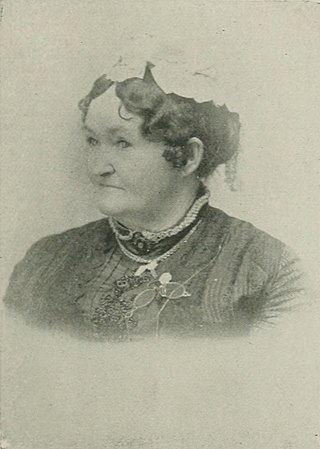
Alice A. W. Cadwallader was an American philanthropist and temperance activist. She served in Florida as state president of the Woman's Christian Temperance Union (WCTU).

Temperance Temple served as the headquarters of the National Woman's Christian Temperance Union (WCTU). It was located in Chicago, Illinois at the southwest corner of LaSalle Street and Monroe Street, in the center of city's financial district. Work was begun in July, 1890, and the building was ready for occupancy in May 1892. The lot was valued at US$1,000,000; the rentals from the building were expected to bring in an annual income of over US$200,000. The capital stock was US$600,000, one-half of which was owned by the Temple Building Association of Chicago (TBAC), and it was expected all would be secured to that association. The TBAC, a stock company with Marshall Field president of the board of trustees, owned The Temple, the third of the affiliated interests of the National WCTU. The office building was erected at a cost of US$1,200,000 on ground leased to the TBAC by Field. Temperance Temple was demolished in 1926.
Clara Rankin Coblentz was an American temperance reformer and clubwoman. Coblentz held leadership positions in a number of organizations including president of the Non-Partisan National Women's Christian Temperance Union, the Presbyterian Foreign Missionary Society (Clarion), and the Home and Foreign Missionary Society (Clarion).

Marion Howard Dunham was an American teacher, temperance activist, and suffragist. She entered upon the temperance field in 1877 with the inauguration of the red ribbon movement in her state of Iowa, but believing in more permanent effort, she was the prime agitator in the organization of the local Woman's Christian Temperance Union (W.C.T.U.). In 1883, she was elected state superintendent of the Department of Scientific Temperance and held the office for four years lecturing to institutes and general audiences on that subject most of the time. She procured the "Prohibitory law of the state of Iowa", in February 1886. When the Iowa State Temperance Union began to display its opposition to the national W.C.T.U., she came to be considered a leader on the side of the minority who adhered to the national and when the majority in the state union seceded from the national union October 16, 1890, she was elected president of those remaining auxiliary to that body. She spent a large part of her time in the field lecturing on temperance.

Susanna M. D. Fry was an American educator and temperance worker. Her teaching career began in the primary department of the village school, but her superior ability as a teacher led her swiftly into positions of greater responsibility. Fry was a professor who held the chair of English literature at Illinois Wesleyan University, Bloomington, Illinois and at the University of Minnesota. She served as president of the Minnesota Woman's Christian Temperance Union (W.C.T.U.), and managing editor of The Union Signal, the organ of the National W.C.T.U. During her career as a professor and as an official of the W.C.T.U., Fry was a frequent speaker in Prohibition campaigns and at temperance conventions. Fry was the only woman chosen from the Methodist church to speak before the Parliament of the World's Religions, 1893.

Lella A. Dillard was an American temperance leader. She served as president of the Georgia State Woman's Christian Temperance Union (W.C.T.U.), and afterwards as National Director of the W.C.T.U.'s Peace Department.

Rev. Emma Pow Bauder was an American evangelist, missionary, reformer, and author. Affiliated with the Church of the United Brethren in Christ in Michigan since 1879, she soon thereafter relocated to the San Francisco Bay Area, where she was also active with the Woman's Christian Temperance Union (W.C.T.U.), the largest women's organization in the U.S. during the Gilded Age.
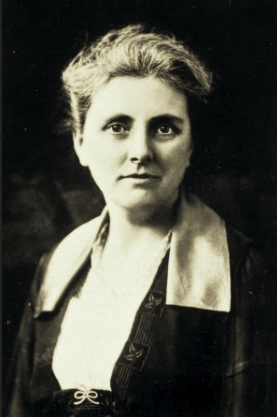
Deborah Knox Livingston was a Scottish-born American lecturer associated with temperance and suffrage movements. She spent much of her life in service to the National and World's Woman's Christian Temperance Union (WCTU), as well as the Young Women's Christian Association (YWCA), Federation of Women's Clubs, League of Women Voters, and World League Against Alcoholism (WLAA). In Maine, she served as the chair of the state's Suffrage Campaign Committee, while in Rhode Island, she was President of the state's WCTU. In addition to the textbook, Studies in Government (1921), Livingston was the author of several treatises and articles.

Frances W. Graham was an American temperance activist who served as President of the New York State Woman's Christian Temperance Union (WCTU), and wrote two histories about the State organization. She also served as musical director of the National WCTU.
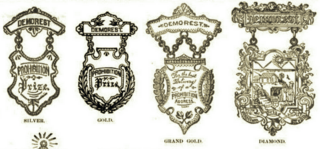
The Demorest Medal Contests were a system of public oratorical competitions, founded as a means of Prohibition propaganda by William Jennings Demorest in April 1886. It was his idea to make these contests promote directly the growth of Prohibition sentiment by enlisting the effort and winning the sympathy of boys, girls, young men, and young women. After Demorest's death, the Demorest medal system was merged with that of the Woman's Christian Temperance Union (WCTU), and Mrs. Demorest was placed in charge of the Medal Department. She, however, died a few months later, and Adelia E. Carman became head of the Medal Department, which position she held until 1922. Mrs. Carman was succeeded by her daughter, Maude Carman Cathcart.
References
- 1 2 The Tribune Almanac and Political Register for ... Greeley & McElrath. 1891. p. 213. Retrieved 3 December 2022.
 This article incorporates text from this source, which is in the public domain .
This article incorporates text from this source, which is in the public domain . - 1 2 3 4 The American Almanac, Year-book, Cyclopaedia and Atlas. New York American and Journal, Hearst's Chicago American and San Francisco Examiner. 1903. pp. 215–16. Retrieved 3 December 2022.
 This article incorporates text from this source, which is in the public domain .
This article incorporates text from this source, which is in the public domain . - ↑ Phinney, Ellen J.; Duty, F. Jennie (29 October 1890). "TO IGNORE PARTIES". The Daily Times. p. 1. Retrieved 3 December 2022– via Newspapers.com.
 This article incorporates text from this source, which is in the public domain .
This article incorporates text from this source, which is in the public domain . - ↑ "Chronicle, Obituary, and Calendar". Christian Literature. 16 (3). Christian Literature Company: 467. 1897. Retrieved 3 December 2022.
 This article incorporates text from this source, which is in the public domain .
This article incorporates text from this source, which is in the public domain . - 1 2 "Progress of the Movement". The National Advocate. Vol. 33, no. 3. New York: National Temperance Society. 1898. p. 45. Retrieved 3 December 2022.
 This article incorporates text from this source, which is in the public domain .
This article incorporates text from this source, which is in the public domain .